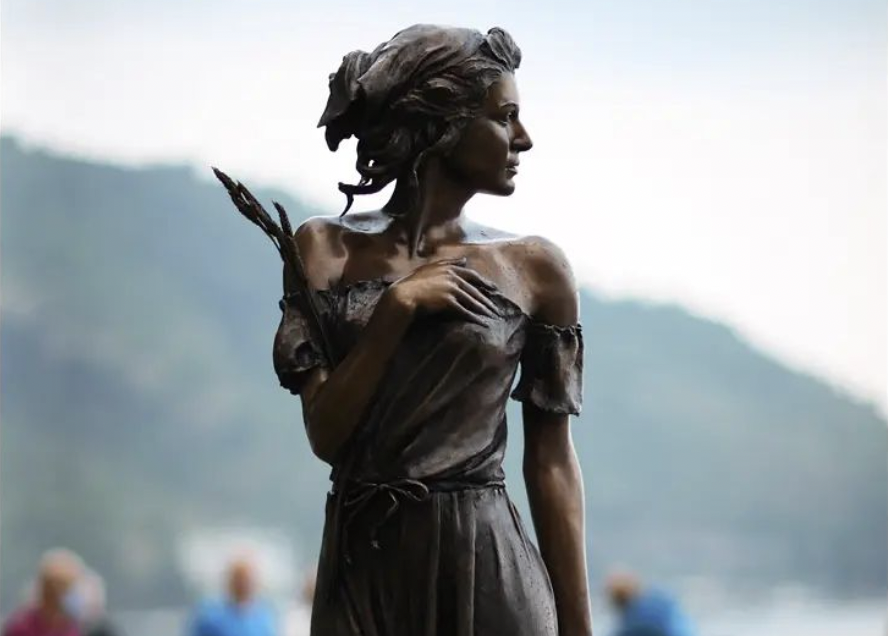
Culture Writer Anna Drysdale reports on the controversy surrounding the statue made as a tribute to one of Luigi Mercantini’s famous poems
A statue depicting the female persona from a 19th-century Italian poem has been reprimanded after its unveiling last month.
Work of the sculptor Emanuel Stifano, the bronze figure dons a transparent dress that draws obvious attention to attributes of the female body. The statue was revealed in Sapri during late September and has since been continually criticised for its sexist portrayal of women and inaccurate depiction of the poem’s persona.
Constructed as a tribute to Luigi Mercantini’s La Spigolatrice di Sapri (The Gleaner of Sapri), the classic Italian piece is studied across hundreds of schools in Italy, becoming an important part of its literary culture. Based on the real-life events of Sapri in 1857, the poem describes the arrival of revolutionists in the city who sought to gather support in an attempt to overthrow the King. The Gleaner is the poem’s voice, a peasant woman who witnessed the arrival of the men.
In recognition of Sapri as a coastal town, the revealing nature of the statue is said to be representative of the sea breeze, inviting movement in the sculpted skirt and so highlighting the body.
The statue itself holds no relation to the anti-Bourbon revolution it was commissioned to pay tribute to
There has been a call to remove the statue, and by doing so, eliminate its inaccurate and sexualised representation of Sapri’s women. Laura Boldrini, former speaker of the Italian Senate and member of the centre-left Democratic party further argued this point, branding the statue ‘an offence to women and the history it should celebrate.’ The statue itself holds no relation to the anti-Bourbon revolution it was commissioned to pay tribute to.
Stifano took to Facebook to defend his work stating that, with full creative freedom, he would have had the statue entirely naked. The sculptor continued, ‘I always tend to cover the human body as little as possible, regardless of gender.’
The statue is grounds for many conflicting arguments surrounding art, and the extent it can be justified with ‘artistic interpretation’ and ‘creative freedom.’ The argument over the sculpture’s presence is reminiscent of that caused by the art dedicated to Mary Wollstonecraft in 2020. Similarly, the statue featured a nude woman on top of an abstract silver shape. In a post on 27th September, Stifano admitted his focus on the female body was not a ‘faithful instant’ to an 800-year-old farmer, ‘but rather to represent an ideal of a woman, evoke her pride, the awakening of a consciousness, all in a moment of great pathos.’
The statue is grounds for many conflicting arguments surrounding art
While the sculptor maintains a stance of artistic justification, it is hard not to acknowledge the arguments of the many women in disagreement with the statue. Being such a significant piece of literature within Italian culture, the figure can be seen to give a false impression through its mere association. Is it justifiable to allow one man’s vision of a historically celebrated poem to influence the visions of others up and down the country? Especially one who claims his intention was never to fully represent the Gleaner authentically.
Art in all its forms continues to hold a large cultural impact. While there is an argument for the sculptor’s artistic vision, it is believed the statue should be built in the complete image of the poem. It is hard to be drawn away from this impression of sexist voyeurism with photos from the unveiling showing the statue surrounded by a predominantly male audience.
Enjoyed this? Read more on Redbrick Culture!
Exhibition Review: Peace Doves
Royal Academy Summer Exhibition 2021
How Hackney is Celebrating the Windrush Generation through Art
Comments